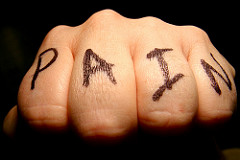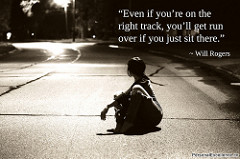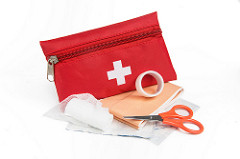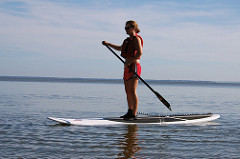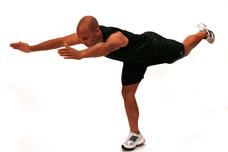We’ve all been there…
You follow your diet religiously for a week and then break it with a weekend binge. You commit to working out more, hit the gym for two days, and then struggle to get off the couch after a long day of work. You set a vision for your career and get excited by the possibilities, only to get dragged down in everyday responsibilities and not return to your dream until months later.
I’ve been there too, but as time rolls on I’m beginning to realize something important:
These small hiccups don’t make you a failure, they make you human. The most successful people in the world slip up on their habits too. What separates them isn’t their willpower or motivation, it’s their ability to get back on track quickly.
There will always be instances when following your regular routine is basically impossible. You don’t need superhuman willpower, you just need strategies that can pull you back on track. Habit formation hinges on your ability to bounce back.
With that said, here are seven strategies that you can use to get back on track right now…
1. Schedule your habits into your life.
Give your habits a specific space in your life. There are two main options for making this happen…
Option 1: Put it on your calendar.
Want to get back on track with your writing schedule? 9am on Monday morning. Butt in chair. Hands on keyboard. That’s when this is happening.
Want to exercise? Give yourself a time and place that it needs to happen. 6pm every Monday, Wednesday, and Friday. I’ll see you in the gym.
Option 2: Tie it to your current behavior.
Not all of your habits will fit a specific time frame, but they all should have a trigger that acts as a reminder to do them.
Want to floss? Everyday after brushing your teeth. Same order, same way, every time.
Want to be happier? Every time you stop at a red light, tell yourself one thing you’re grateful for. The red light is the reminder. Same trigger, same sequence, every time.
The bottom line is this: it might be nice to tell yourself that you’re going to change, but getting specific makes it real and gives you a reason and a reminder to get back on track whenever you slip up.
Soon is not a time and some is not a number. When and where, exactly, are you going to do this? You might forget once, but what system do you have in place to automatically remind you the next time?
2. Stick to your schedule, even in small ways.
It’s not the individual impact of missing your schedule that’s a big deal. It’s the cumulative impact of never getting back on track. If you miss one workout, you don’t suddenly feel more out of shape than you were before.
For that reason, it’s critical to stick to your schedule, even if it’s only in a very small way.
Don’t have enough time to do a full workout? Just squat.
Don’t have enough time to write an article? Write a paragraph.
Don’t have enough time to do yoga? Take ten seconds to breathe.
Don’t have enough time to go on vacation? Give yourself a mini–break and drive to the neighboring town.
Individually, these behaviors seem pretty insignificant. But it’s not the individual impact that makes a difference. It’s the cumulative impact of always sticking to your schedule that will carry you to long–term success.
Find a way to stick to the schedule, no matter how small it is.
3. Have someone who expects something of you.
I’ve been on many teams throughout my athletic career and you know what happens when you have friends, teammates, and coaches expecting you to be at practice? You show up.
The good news is that you don’t have to be on a team to make this work. Talk to strangers and make friends in the gym. Simply knowing that a familiar face expects to see you can be enough to get you to show up.
4. Focus on what you can work with.
We waste so much time focusing on what is withheld from us.
This is especially true after we slip up and get off track from our goals. Anytime we don’t do the things we want to do — start a business, eat healthy, go to the gym — we come up with excuses…
“I don’t have enough money. I don’t have enough time. I don’t have the right contacts. I don’t have enough experience. I need to learn more. I’m not sure what to do. I feel uncomfortable and stupid.”
Here’s what I want you to think instead:
“I can work with this.”
Because you can. The truth is that most of us start in the same place — no money, no resources, no contacts, no experience — but some people (the winners) choose to get started anyway.
It’s not easy, but I promise you that your life will be better if you choose to feel uncomfortable and make progress, rather than complain and make excuses. Shift your focus from what is withheld from you to what is available to you.
It’s rare that your circumstances prevent you from making any progress. You might not like where you have to start. Your progress might be slow and unsexy. But you can work with this.
5. Just because it’s not optimal, doesn’t mean it’s not beneficial.
It’s so easy to get hung up on doing things the optimal way and end up preventing yourself from doing them at all.
Here’s an example…
“I really want to eat Paleo, but I go to Chipotle every Friday with my friends and I like to get sour cream and cheese on my burrito and I know that’s not Paleo. Plus, I have a book club meeting every Tuesday and we always have ice cream and I don’t want to be the only one not joining the group. Maybe I should try something else?”
Seriously? Is eating clean five days per week better than not eating clean at all?
Yes, I believe it is.
In fact, eating healthy one day per week is better than none at all. Make that your goal to start: eat clean every Monday.
Just because you can’t stick to the optimal schedule, doesn’t mean you shouldn’t stick to it at all. Good habits are built gradually. Start slow, live your life, and get better along the way. Progress is a spectrum, not a specific place.
Furthermore, if you haven’t mastered the basics, then why make things harder for yourself by fretting about the details?
The optimal strategies will make the last 10% of difference. Meanwhile, 90% of your results will hinge on you simply sticking to the basics: don’t miss workouts, eat real food, do the most important thing first each day. Master the fundamentals now. You can optimize the details later.
6. Design your environment for success.
If you think that you need more motivation or more willpower to stick to your goals, then I have good news. You don’t.
Motivation is a fickle beast. Some days you feel inspired. Some days you don’t. If you want consistent change the last thing you want to rely on is something inconsistent.
Another great way to overcome this hurdle and get back on track is to design your environment for success.
Most of us acknowledge that the people who surround us influence our behaviors, but the items that surround us have an impact as well. The signs we see, the things that are on your desk at work, the pictures hanging on your wall at home … these are all pieces of our environment that can trigger us to take different actions.
When I wanted to start flossing consistently, one of the most useful changes I made was taking the floss out of the drawer and keeping it next to my toothbrush on the counter. It sounds like a silly thing to focus on, but the visual cue of seeing the floss every time I brushed my teeth meant that I didn’t have to remember to pull it out of the drawer.
With this simple environment change, I made it easy to do the new habit and I didn’t need more motivation or willpower or a reminder on my phone or a Post-It note on the mirror.
If you want to hear more about my riveting flossing adventures (and how to stick to small healthy habits), read this.
Another example of environment design is the “green plate trick” that I suggest as an easy way to lose weight and eat more green vegetables. You can read about this strategy (and about the research explaining why it works) in this article.
7. Care.
It sounds so simple, but make sure that the habits that you’re trying to stick to are actually important to you.
Sometimes forgetting your habit is a sign that it’s not that important to you. Most of the time this isn’t true, but it happens often enough that I want to mention it.
It’s remarkable how much time people spend chasing things that they don’t really care about. Then, when they don’t achieve them, they beat themselves up and feel like a failure for not achieving something that wasn’t important to them all along.
You only have so much energy to put towards the next 24 hours. Pick a habit that you care about. If it really matters to you, then you’ll find a way to make it work.
Get Back on Track
Change can be hard. In the beginning, your healthy habits might take two steps forward and one step back.
Anticipating those backwards steps can make all the difference in the world. Develop a plan for getting back on track and recommit to your routine as quickly as possible.

